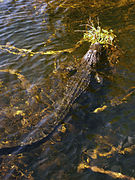Did you know 1
Did you know 2
Did you know 3
Did you know 4
Did you know 5
Did you know 6
Did you know 7
Did you know 8
Did you know 9
Did you know 10
Did you know 11
Did you know 12
Did you know 13
Did you know 14
Did you know 15
Did you know 16
Did you know 17
Did you know 18
Did you know 19
Did you know 20
Did you know 21
- ^ "Data Sources". Global Footprint Network. 2010-02-05. Retrieved 2010-02-05.














